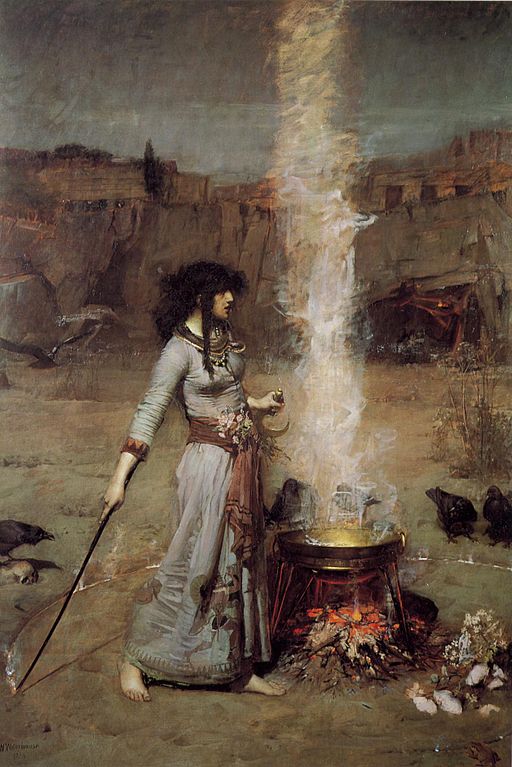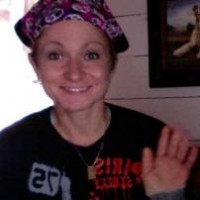There are thousands of mixed-mode and often questionable self-help books available that offer pathways to empowerment, improvement, and the discovery of our “Inner Goddess.”
Many of them suggest some quick fixes that focus on material abundance via underdeveloped affirmations and vision boards dabbed with glitter and mythical beasts (phoenixes and unicorns are especially popular).
The result of this is that the root cause of suffering can be pushed deeper down inside. There, it can fester and later bubble in the form of depression, or worse.
I speak from experience—about depression, not about vision boards and unicorns. The first thirty-plus years of my life were spent questioning my self-worth, most of which was tied to a feeling of inferiority over being born a woman. I chose male-dominated careers and tried to prove myself in them. I gravitated toward male friends to subconsciously distance myself from the feminine.
I suppressed my intuition, my emotions, and my ability to express feelings because I’d been taught that all of those things were signs of weakness.
I’ve come a long way, baby, and the books listed here played a role in helping me appreciate and embrace the feminine. The self-help magical thinking pulp in the New Age aisle at bookstores always struck me as absurd, delusional, and inauthentic. But these books pulled me through.
I took the approach of looking at history, archeology, and comparative mythology and avoided a singular focus on feminist commentary, not because it lacks value (it certainly is valuable), but because I wanted to survey the facts, apart from the persuasion of politics. Politics are always at play, of course, just as we cannot escape culture or society, but, for me, pre-history held the power.
Maybe one of these books will resonate with you. Maybe none of them will.
Either way, take what works for you and leave the rest behind.
There’s nothing clever or profound I can add to the below titles as the authors have said it all within their pages. For that reason, I’ve included relevant quotes from each to give you an idea of how these books inspire and inform.
All of them are non-fiction and unicorn-free.
1. The Chalice and the Blade by Riane Eisler
“The chapters tell a story that begins thousands of years before our recorded (or written) history: the story of how the original partnership direction of Western culture veered off into a bloody five-thousand year dominator detour. . .This is the alternative of breakthrough rather than breakdown: how through new ways of structuring politics, economics, science, and spirituality we can move into the new era of a partnership world.” ~ Eisler, xxiii
2. Women Who Run With Wolves by Clarissa Pinkola Estes
“Over time we have seen the feminine instinctive nature looted, driven back, and overbuilt. For long periods it has been mismanaged like the wildlife and the wildlands. For several thousand years, as soon and as often as we turn our backs, it is relegated to the poorest land in the psyche. . .This is a book of women’s stories, held out as markers along the path. They are for you to read and contemplate in order to assist you toward your own natural-won freedom, your caring for self, animals, earth, children, sisters, lovers, and men. . .the doors to the world of the wild Self are few but precious.” ~ Estes, 21
3. Women Warriors: A History by David E. Jones
“The historical record shows no martial domain exclusive to either males or females. Both attacked enemy strongholds, defended castles, laid sieges, and led expeditionary forces. Both built military empires, dueled for honor with sword and pistol, and designed military strategy. . .The cases in this book represent a bare tip of the iceberg. For every woman warrior that is known, thousands, perhaps millions, escaped detection.” ~ Jones, 249
4. When God Was A Woman by Merlin Stone
“It is shocking to realize how little has been written about the female deities who were worshipped in the most ancient periods of human existence and exasperating to then confront the fact that even the material [available] has been almost totally ignored in popular literature and general education. Most of the information and artifacts concerning the vast female religion, which flourished for thousands of years before the advent of Judaism, Christianity and the Classical Age of Greece, have been dug out of the ground only to be reburied in obscure archeological texts. . .This is not intended as an archaeological or historical text. It is rather an invitation to all women to join in the search to find out who we really are, by beginning to know our own past heritage as more than a broken and buried fragment of a male culture.” ~ Stone, xv-xxv
5. The Once and Future Goddess by Elinor W. Gadon
“The ancient Goddess cultures that we will explore [here] were women-centered, peaceful, and egalitarian. Later the Goddess had to share her power with a pantheon of sky gods, although her worship continued to be widely popular into the early Christian period. Outside mainstream Western culture and the Islamic world, female deities are stil worshipped almost everywhere. . .The demise of the Goddess can be traced back to the invasions of warlike nomadic peoples from the Asiatic and European north who overran the centers of Goddess culture. . .The Goddess, women, and their values were suppressed. . .In our own time, in our own culture, the Goddess once again is becoming a symbol of empowerment for women.” ~ Gadon, xi-xv
6. Origins of Modern Witchcraft by Ann Moura
“Human history is reevaluated with each generation, and often the result is colored by the political, cultural, social, and religious demands of the time period. When politics and religion combine, as has been the case in western history for over a thousand years, education and knowledge suffer. The Seeker must be especially diligent in pursuit of wisdom, and look beyond the ordinary texts found in school for mass consumption. The recent discoveries of various archeologists and historians must be hunted down if we want to find the true origins of civilization.” ~ Moura, 3
7. The Language of the Goddess by Marija Gimbutas (Archeology)
“The purpose of this book is to present the pictorial ‘script’ for the religion of the Old European Great Goddess, consisting of signs, symbols, and images of divinities. These are our primary sources for reconstructing this prehistoric scen and are vital to any true understanding of Western religion and mythology. . .This volume is a study in archeomythology, a field that includes archeology, comparative mythology, and folklore, and one that archeologists have yet to explore.” ~ Gimbutas, xv-xviii
8. The Great Cosmic Mother by Monica Sjoo and Barbara Mor
“We have to understand how and why these ancient millennia of womancultures have been buried––ignored, denied, passed off as ‘mythology’ or ‘primitive prehistoric origins’ —by Western male historians who insist (and often really believe) that ‘real history’ began only about five thousand years ago—with the relatively recent institutions of patriarchy. . .It is a patriarchy that devalues and disconnects the body from the spirit in order to make that body’s energy accessible for exploitation. A feminist spirituality must begin with the fact of being alive as a biological body, on a living and conscious biological planet.” ~ Sjoo and Mor
Relephant:
What We Think We Become: The Magic-Free Meaning.
Author: Kim McCann
Assistant Editor: Brook Bentley / Editor: Renée Picard
Photo: Wikimedia Commons



Read 5 comments and reply